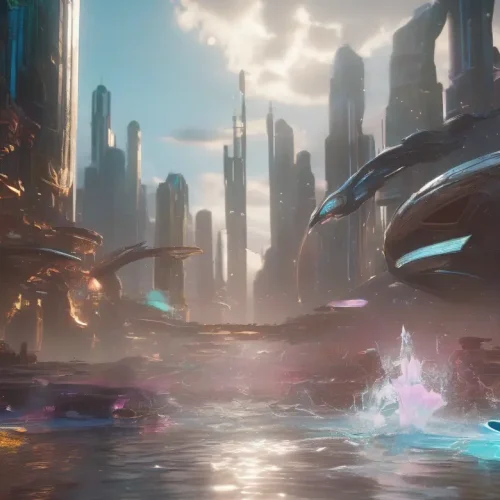The Anatomy of a World-Class Website: Key Principles
In today’s hyper-competitive digital landscape, a website is far more than a virtual storefront or a digital business card; it is an immersive experience. The foundation of this experience is a beautiful website design, a concept that transcends mere aesthetics. True digital excellence is achieved through a masterful blend of stunning visual design (User Interface or UI) and seamless, intuitive functionality (User Experience or UX). It’s a strategic synthesis of art and science, where every element works in harmony to guide, engage, and convert visitors. This article delves into the core principles that define world-class web design, analyzing award-winning examples to decode the secrets behind their success.
A truly effective design is not accidental. It is built upon a foundation of established principles that govern how users perceive and interact with digital content. From the strategic use of empty space to the psychology of color, these tenets are the building blocks of an unforgettable online journey.
1. Strategic Use of Visual Hierarchy and White Space
Visual hierarchy is the principle of arranging elements to show their order of importance. A successful website design guides the user’s eye naturally from the most critical elements, like headlines and calls-to-action (CTAs), to secondary information. This is often achieved through scale, color, contrast, and placement. Complementing this is the use of white space (or negative space)—the empty areas around design elements. Far from being wasted space, it is an active component that reduces clutter, improves readability, and creates a sense of sophistication and focus. Brands like Apple have mastered this, using generous white space to make their high-resolution product images the undeniable heroes of the page.
2. Intuitive Navigation and User Experience (UX)
If a user can’t find what they’re looking for, even the most visually stunning design is a failure. Intuitive navigation is the bedrock of a positive UX. This involves creating a logical and predictable structure through clear menus, organized information architecture, and recognizable icons. A user should never have to wonder where they are on a site or how to get to their desired destination. Features like breadcrumb trails, a persistent primary navigation bar, and a well-organized footer all contribute to a seamless user journey, building trust and reducing bounce rates.
3. The Power of Visual Storytelling
The most beautiful and effective websites are powerful storytellers. They use a combination of compelling visuals—high-quality photography, cinematic videos, and purposeful animations—to convey a brand’s narrative and values. This is not just about decoration; it’s about creating an emotional connection. A striking hero image can capture attention in a fraction of a second, while subtle micro-interactions (small animations triggered by user actions like hovering over a button) can provide delightful feedback and guide users through a process. This visual language must be consistent, reinforcing the brand’s identity across every page.
4. Responsive Design and Technical Performance
In a multi-device world, a website’s beauty must be adaptable. Responsive design ensures that a site looks and functions flawlessly on any screen size, from a large desktop monitor to a smartphone. This technical requirement is non-negotiable for modern UX. Equally important is performance. Page loading speed is a critical factor; studies consistently show that even a one-second delay can drastically increase bounce rates. Optimizing images, leveraging browser caching, and writing clean code are essential technical tasks that support the overall design and user experience.
5. Accessibility and Inclusive Design
A truly great website is accessible to everyone, including users with disabilities. Inclusive design involves practices like providing alternative text for images (for screen readers), ensuring sufficient color contrast for readability, enabling keyboard navigation, and using clear, semantic HTML. Designing for accessibility not only expands a website’s potential audience but also demonstrates corporate social responsibility and often improves the overall user experience for all visitors.
Case Studies in Digital Excellence: A Showcase of Beautiful Website Design
Theory is best understood through practice. By analyzing some of the world’s most celebrated websites, we can see these core principles in action. These examples have won accolades not just for their appearance, but for their masterful execution of user-centric design.
Apple: The Masterclass in Minimalist Product Showcasing
It is impossible to discuss beautiful website design without mentioning Apple. Their digital presence is a direct extension of their product philosophy: clean, simple, and incredibly sophisticated. The website uses a monochromatic color palette and vast amounts of white space to ensure their stunning product photography is the sole focus. Navigation is elegantly simple, and the user journey is guided by smooth, subtle animations and micro-interactions that make exploring product features an engaging and intuitive process. Every pixel feels intentional, creating a premium experience that reinforces the brand’s value.
Wealthsimple: Simplifying Financial Complexity
Financial services websites are often cluttered and intimidating. Wealthsimple, a winner of multiple design awards, defies this norm completely. The site leverages a clean, animation-rich interface with bold, editorial typography and purpose-driven imagery to demystify investing. The design breaks down complex information into digestible segments, using a friendly and approachable tone. The strategic use of illustrations and interactive elements makes the experience feel less like a bank and more like a conversation with a trusted advisor, proving that beautiful design can build trust in even the most data-heavy sectors.
Typeform: Redefining User Interaction
Typeform has transformed the mundane task of filling out a form into an enjoyable, conversational experience, and its website perfectly reflects this ethos. The design is playful, creative, and highly user-centric. Instead of presenting a static list of questions, the interface engages the user one question at a time, using fluid animations and a sleek, modern layout. This approach not only improves completion rates but also serves as a brilliant demonstration of their product’s capabilities. It’s a prime example of a website that is both a marketing tool and a product demo, wrapped in a beautiful UI.
Tach Clothing: E-commerce Minimalism in Action
For online stores, the primary goal is to sell products, and Tach Clothing’s website demonstrates how minimalist design can facilitate a perfect shopping experience. The design puts the brand’s unique photography front and center, using a simple grid layout that is easy to browse. A key feature is the hover-triggered secondary product image, which allows users to see an item from another angle without clicking away from the main category page. This small but brilliant UX choice simplifies product discovery. The limited color palette and clean typography ensure nothing distracts from the clothing, making the shopping journey effortless and pleasant.
Hyer: Immersive Storytelling Through Animation
As a private jet rental company, Hyer needs to make a powerful first impression of luxury and exclusivity. Their award-winning website achieves this through a striking, full-screen animated illustration that moves as the user scrolls. This immersive experience immediately draws the visitor into the brand’s world. The rest of the site continues this narrative with cinematic photography and elegant typography. Hyer’s website is a testament to how bold, interactive storytelling can create a memorable and emotionally resonant digital experience that captures the essence of a high-end brand.
The Horizon of Web Design: Future-Forward Trends
The digital world is in a constant state of flux, and the principles of web design are evolving alongside technology. Staying ahead requires an understanding of the trends that are shaping the future of user interaction and digital aesthetics.
Voice User Interfaces (VUI) and Conversational Design
As voice assistants like Alexa and Google Assistant become more integrated into our lives, VUI is becoming increasingly relevant for web design. This involves designing conversational flows that guide users through a website’s content or services using voice commands. While still an emerging trend, it points to a future where interaction is less about clicking and more about dialogue.
Augmented Reality (AR) and Immersive Experiences
Augmented Reality is breaking out of the confines of mobile apps and finding its way into web browsers. For e-commerce, this could mean allowing users to virtually place a piece of furniture in their room before buying it. For other sectors, it could involve creating interactive 3D product showcases or immersive brand stories. Web-based AR promises to make the digital experience more tangible and engaging.
Nostalgic Aesthetics and Retro Futurism
Design trends are often cyclical, and we are currently seeing a resurgence of aesthetics from the 70s, 80s, and even the early days of the web. This isn’t about simply copying the past, but about infusing modern, clean layouts with retro elements like bold typography, vibrant color palettes, and playful patterns. This trend taps into a sense of nostalgia while still feeling fresh and contemporary, creating a fun and optimistic user experience.
Conclusion: Design as a Strategic Imperative
In conclusion, a beautiful website design is not a luxury; it is a strategic imperative for any business or brand looking to succeed online. The world’s most effective websites demonstrate that true excellence lies in the thoughtful integration of aesthetics and function. They prioritize the user at every turn, creating journeys that are not only visually pleasing but also intuitive, accessible, and performant. By understanding the core principles of visual hierarchy, intuitive UX, storytelling, and technical excellence, and by keeping an eye on emerging trends, we can create digital experiences that not only win awards but also win the loyalty and trust of users.






